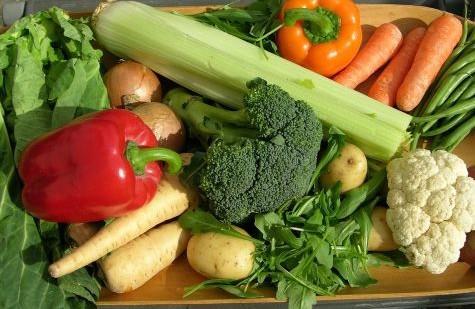
The Institute of Mechanical Engineers estimated in a recent report – Global Food: waste not, want not – that world food waste reaches up to two billion metric tonnes per annum, a figure that’s even harder to stomach considering 870 million people, nearly 10 per cent of the global population,
are starving.
The numbers highlight the severity of the situation and, in recent years, pressure has continued to mount on food producers and sellers to do more to tackle the issue. Supermarkets in particular have been in the spotlight hitting back at the report with dismissive responses, claiming commitment to tackling the topic through waste reduction schemes, with a focus on in-store waste. Yet the supermarkets’ responsibility and contribution to the problem stretches further back than their stores, depots and distribution centres. Pressure exerted on producers to supply near-perfect goods has had a significant impact on waste levels throughout the supply chain, something they recognise but do not currently focus on. It is here wherein lies an opportunity.
Current UK retail specifications on fresh produce far exceed EU minimum requirements on visual quality attributes such as size, shape, colour and skin blemish. As a result, a significant volume of grown produce never actually reaches the shelves. In the case of apples, five to 25 per cent is lost through grading; for avocados it can be as much as 30 per cent. There is however a strong argument that these stringent specifications are highly appropriate in a country where consumers’ buying behaviour for produce is ruled not only by price, but by visual quality and smell. Driven by the supermarkets’ focus on developing a non-price point of difference, consumers’ expectations of a consistently high standard of visual quality has become unrealistic as a result of what they have learned to become used to.
It therefore comes as no surprise that superior visual quality has become the retailers’ single most important selling point for their fresh produce, making the prospect of compromising on it an unnerving one. Low tolerance for even the slightest deviation from the so-called norm has resulted in unsustainable practices from producers, retailers and consumers. Not only is waste generated during grading or quality assurance, but there is a significant investment of resources into the growth, harvesting and packing of a crop. With significant influence on consumer and producer behaviour, supermarkets not only hold a great deal of responsibility to address the issue, but are also presented with an opportunity to benefit from the challenge by turning it on its head.
In order to address the waste generated from these high expectations, there needs to be a relaxation of visual quality standards and greater acceptance of less attractive produce. Presently, anything from a few superficial imperfections to size and colour deviating from a strict supermarket-defined standard, will deem items unfit for many outlets. However, if the suggested action is to provide a positive impact, two things need to happen: 1) profitability levels need to be maintained, and 2) it must be ensured that lower-spec items do not just go to waste in store. Real change in consumers’ buying behaviour is key, meaning consumer education will have to play a large role. A focus on developing customers’ understanding of the product and its potential physical defects, could begin to reverse their expectations and perception of what constitutes a quality product. Ensuring they have understood the true determinants of quality attributes they are looking for, namely flavour, texture or nutritional value, as opposed to colour, size or external blemishes, would help consumers to make more educated decisions. In addition, consumers will also need to understand the positive impact of buying such produce including reductions in food waste through an increased percentage of it reaching the point of sale, as well as fewer resources and less energy invested into ensuring visual quality.
Changing consumer behaviour in this manner is without a doubt a lengthy and challenging prospect. But as several marketing initiatives have shown in the past, it is achievable. Take, for example, the use of the Union Jack on British products. ‘Buy British’ and ‘Support British Farmers’ campaigns have argued that buying local has a greatly reduced impact on the environment while at the same time provides support for the UK economy. Today at least one third of UK consumers are willing to pay more for locally sourced produce and for meat is it closer to two thirds. Fairtrade is another example of successful marketing that has changed consumers’ habits. With its high-profile marketing campaigns, it has helped to address a moral issue by warranting a higher price for produce that consumers are willing to pay for. Nonetheless there are examples of campaigns, such as eco-labelling, which have struggled to take off. These do, however, provide a lesson that, to be successful, a significant commitment and belief in its potential benefit is vital.
Yet despite the apparent uphill struggle, retailers already have several factors working in their favour. Firstly, in the current economic climate, consumer behaviour has increasingly been driven by price and not just quality. Whereas most ethical campaigns demand an inflated price, relaxing stringent supermarket specifications would, in turn, reduce the required resource investment in quality systems, processes, technology and personnel, translating into lower costs for producers, supermarkets and, subsequently, prices for consumers.
Furthermore, the increased volume of produce available in the market would aid growth of the industry and add value to what were previously considered low value or worthless by-products. Last but not least, the intangible benefit of an ethical initiative such as this is the point of difference that many retailers strive for, especially if they can market themselves as a pioneer. If supermarkets are serious about tackling food waste, it is time they recognised and addressed the impact of their practices. Fortunately for them, it may not be the bitter medicine they may have previously thought.



